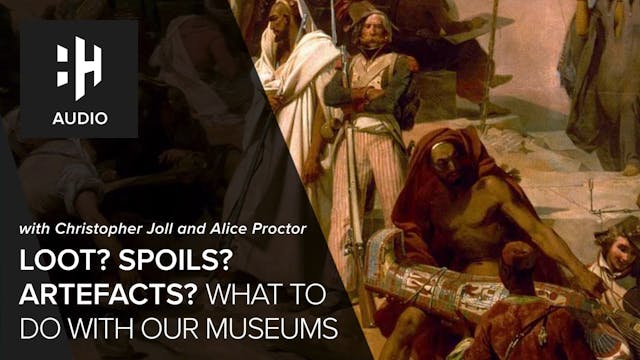In 43 AD, the Romans set up temporary forts along the banks of a river to wait for their Emperor, Claudius, to march onto the enemy capital of Camulodunum (Colchester), and eventually conquer Britain. The river was the River Thames. At the time, it was an area of marshy low-lying land, mostly composed of little islands. A far cry from the wall enclaved mercantile seat of authority it would become.
In today’s episode, Tristan is joined by Professor Dominc Perring, Director of the UCL Centre for Applied Archaeology, to discuss what the archaeology and history can tell us about the rise and fall of Roman Britain’s capital, Londinium.
Up Next in Archive of Dan Snow's History Hit 🎧
-
🎧 Loot? Spoils? Artefacts? What to Do...
Our museums are full of stuff taken, bought, stolen and gifted from foreign countries. It feels like we face a reckoning. What shall we do with it? I talked to two authors of new books that wrestle with this. Christopher Joll is a former soldier who deals specifically with the spoils of war, whil...
-
🎧 Lord Bramall
Dan meets Field Marshall the Lord Bramall, who served from the Second World War until the 1980s.
-
🎧 Lord Jonathan Sumption on Justice a...
The cleverest man in Britain weighs in on the state of our politics and the state of the British electoral system. Lord Sumption was a Justice of the Supreme Court, exceptionally sworn in straight from the bar, and he is also a historian of the Hundred Years War, having written a multi-volume his...




1 Comment